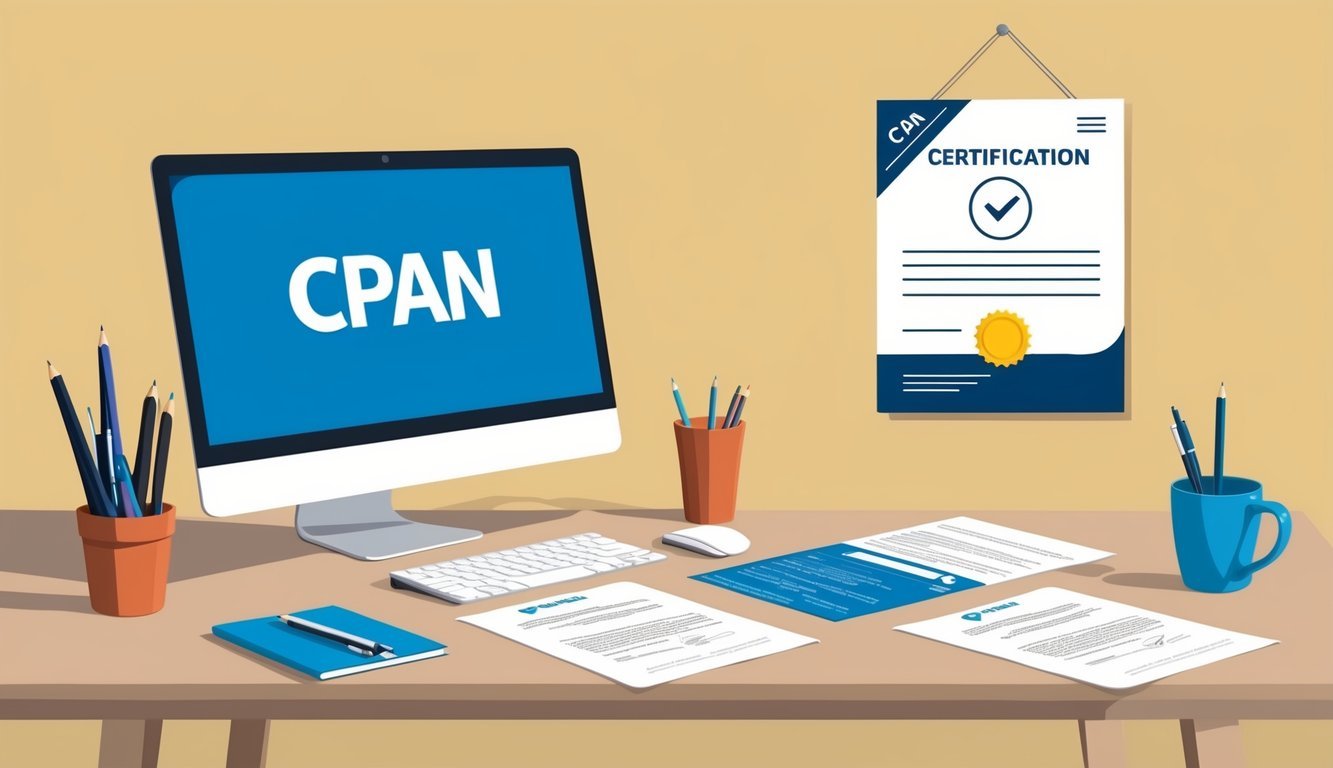CPAN certification is a vital step for nurses working in perianesthesia.
Earning this certification demonstrates your expertise and commitment to high standards in patient care.
The process not only enhances your knowledge but also opens up additional career opportunities in this specialized field.
To qualify for CPAN certification, you must meet specific eligibility requirements and prepare for a comprehensive exam.
Understanding what is expected can help you navigate this journey successfully.
The benefits extend beyond personal achievement; they contribute to improving patient outcomes and advancing your professional development.
With the right preparation and resources, you can confidently approach the certification process.
Explore how CPAN certification can elevate your nursing career and ensure you provide the best possible care to your patients.
Key Takeaways
- CPAN certification showcases your skills in perianesthesia nursing.
- Meeting eligibility and preparing for the exam are crucial steps.
- Certification brings numerous benefits for your career and patient care.
Overview of CPAN and CAPA Certification
CPAN and CAPA certifications are important credentials for nurses specializing in perianesthesia care.
These certifications validate your professional experience and commitment to lifelong learning in this specialized field.
Purpose of CPAN and CAPA Certification
The main purpose of CPAN (Certified Post Anesthesia Nurse) and CAPA (Certified Ambulatory Perianesthesia Nurse) certifications is to set standards for nursing practice in perianesthesia care.
The American Board of Perianesthesia Nursing Certification (ABPANC) oversees these programs, ensuring that they reflect current best practices.
These certifications demonstrate your knowledge and skills in providing safe and effective care to patients undergoing anesthesia.
They help enhance your credibility in the health care field and can improve job prospects.
Nurses who hold these credentials are often seen as leaders in their units, fostering a culture of safety and excellence.
Roles of Certified Perianesthesia Nurses
As a certified perianesthesia nurse, your role encompasses several key responsibilities.
You prepare patients for surgery, monitor their condition during procedures, and assist in recovery after anesthesia.
Your duties may include:
- Conducting preoperative assessments
- Administering medications safely
- Monitoring vital signs
- Educating patients and families about post-anesthesia care
Holding a CPAN or CAPA certification shows that you have met rigorous standards in your field.
This specialized knowledge not only enhances your skills but also positively impacts patient outcomes and safety.
You actively contribute to improving the quality of care within your health care facility.
For more information about these certification programs, you can visit the American Board of Perianesthesia Nursing Certification website at ABPANC.
Eligibility and Requirements

Becoming certified as a CPAN (Certified Post Anesthesia Nurse) requires meeting specific eligibility criteria.
This ensures that registered nurses have the necessary education and experience to sit for the exams.
Prerequisites for Registered Nurses
To qualify for the CPAN certification, you must be a licensed registered nurse.
You should have an unrestricted RN license in your state.
Age is not explicitly stated as a requirement, but you should have enough experience in nursing.
You also need at least 1,200 hours of direct clinical experience caring for patients in Postanesthesia Phase I, typically within the last two years.
Additionally, experience caring for patients in Preanesthesia and Day Surgery is also required for dual certification.
CPAN and CAPA Exam Criteria
The CPAN and CAPA exams have specific criteria that you must meet.
Both require:
- A valid RN license
- 1,200 hours of patient interaction in relevant settings
For the CPAN exam, direct experience in Postanesthesia care is essential.
For the CAPA exam, experience is focused on Preanesthesia and related areas.
The fees for the exams differ based on membership:
- $314 for members of the American Society of PeriAnesthesia Nurses (ASPAN)
- $424 for non-members
You can find more detailed information about requirements and exam preparation at ABPANC Certification.
Exam Preparation and Content
Preparing for the CPAN certification exam involves using effective study resources and understanding key topics on the test.
You can enhance your learning by following structured strategies and focusing on essential content areas.
Study Resources and Strategies
Utilizing the right study resources is crucial for success.
Consider these effective options:
- 12-Week Study Plan: This structured plan helps you cover necessary topics over three months, with approximately four hours of study each week. Find detailed plans at ABPANC.
- Practice Exams: Taking practice tests simulates the exam environment. Completing these can also earn you contact hours. Approved exams are available on ABPANC.
- Review Courses: Attending a review course, such as those offered by Brigham and Women’s Hospital, enhances understanding of perianesthesia nursing topics and prepares you for the exam.
These resources can help you organize your study efforts for maximum effectiveness.
Key Topics for Examination
Understanding the key topics covered in the exam will help focus your studies.
You should pay attention to the following areas:
-
Anesthesia and Sedation: Grasp the different types of anesthesia and the principles of sedation practices in perianesthesia nursing. This includes understanding pharmacology related to medications used.
-
Analgesia Management: Recognize methods for effective pain management, especially how to assess and provide comfort for patients post-anesthesia.
-
Patient Monitoring: Knowledge of monitoring techniques post-anesthesia is vital. You will need to know how to recognize complications and provide appropriate interventions.
Make sure to review the CPAN and CAPA test blueprints to identify specific content areas vital for your success in the exam.
Benefits of Certification
Certification, such as the CPAN and CAPA, provides significant advantages for perianesthesia nurses.
These benefits extend to improving patient care and enhancing career prospects, which are crucial for both nurses and their employers.
Advancing Patient Care
By obtaining certification as a Certified Post Anesthesia Nurse (CPAN) or a Certified Ambulatory Perianesthesia Nurse (CAPA), you strengthen your knowledge and skills.
This advancement directly impacts patient care quality.
- Enhanced Knowledge: Certification ensures you are up-to-date with the latest practices and standards in perianesthesia nursing.
- Improved Outcomes: Studies show that certified nurses contribute to better patient outcomes, leading to higher patient satisfaction.
- Stronger Credibility: Being certified instills confidence in your abilities among patients, families, and healthcare teams.
With such credentials, you play a vital role in promoting safety and effectiveness in patient recovery.
Professional Growth and Opportunities
Earning certification opens doors for professional growth and greater earning potential in your nursing career.
- Career Advancement: Certification often positions you for leadership roles and specialized positions within healthcare settings.
- Increased Employer Confidence: Employers see certification as a mark of excellence, leading to improved job security and potential promotions.
- Higher Earning Potential: Certified nurses typically command higher salaries compared to those without certification, reflecting their advanced skills.
Pursuing certification not only enhances your career but also contributes to a more competent healthcare workforce.
Consider exploring options through the American Board of Perianesthesia Nursing Certification.
Maintaining Certification

To keep your CPAN certification active, you must meet specific requirements.
These include completing continuing education and following the renewal process set by the American Board of Perianesthesia Nursing Certification (ABPANC).
Staying informed about these steps will help ensure your certification remains valid.
Continuing Education
Continuing education is essential for maintaining your CPAN certification.
You need to earn a total of 30 contact hours of continuing education in a five-year cycle.
- Types of Education: Accepted activities include workshops, online courses, and seminars related to perianesthesia nursing.
- Documentation: You must keep records of your completed courses.
For further guidance, you can refer to the CPAN and CAPA Recertification Handbook provided by ABPANC.
Renewal Process
The renewal process for your CPAN certification requires thorough preparation.
Start by checking your certification expiration date, as you need to renew it every three years.
- Application: Submit your application through the ABPANC website.
- Fees: Be prepared to pay the associated fees.
Renewing your certification also involves passing an exam.
You can find detailed information on testing dates and locations on the ABPANC website.
Completing these steps on time will help you maintain your professional certification without any interruptions.
Frequently Asked Questions

This section addresses common questions regarding CPAN certification.
You’ll find clear information on eligibility, preparation, distinctions between certifications, and the online certification process.
What are the eligibility requirements for CPAN certification?
To be eligible for CPAN certification, you need at least 1,200 hours of direct clinical experience in the last two years.
This experience should be in perianesthesia nursing or related fields.
You also need to hold an active RN license.
How can I prepare for the CPAN certification test?
Preparation for the CPAN test can include studying the exam content outline, utilizing review courses, and practicing with sample questions.
Many candidates find it helpful to join study groups or use online resources to enhance their understanding.
The ABPANC website offers helpful materials.
What is the difference between CAPA and CPAN certification?
CPAN (Certified Post Anesthesia Nurse) certification focuses on nursing care for patients recovering from anesthesia.
CAPA (Certified Ambulatory Perianesthesia Nurse) certification is for nurses working in outpatient settings.
Each certification has its own set of requirements and focus areas.
What is the process for obtaining CPAN certification online?
To obtain CPAN certification online, you need to complete an application on the ABPANC website.
After your application is approved, you can schedule your exam through a remote proctoring service.
This allows you to take the exam from a convenient location.
How long is the CPAN certification valid once obtained?
Once you earn your CPAN certification, it is valid for three years.
After this period, you will need to recertify to maintain your credentials and demonstrate your ongoing commitment to professional development.
Is there a review course available for the CPAN exam in 2024?
Yes, review courses are available for the CPAN exam in 2024.
You can find virtual courses and study materials that are tailored to help you prepare effectively.
Check the ASPAN website for updates and resources related to review courses.

